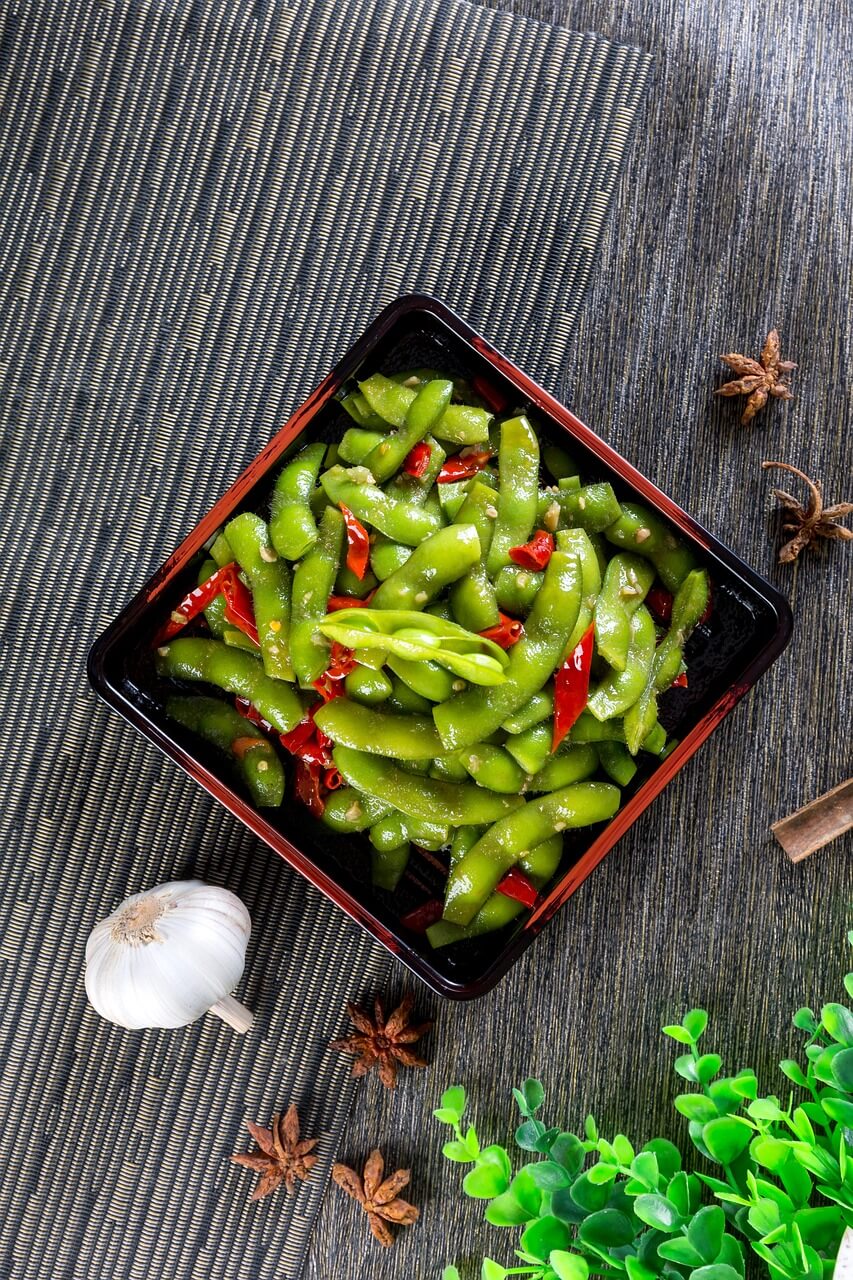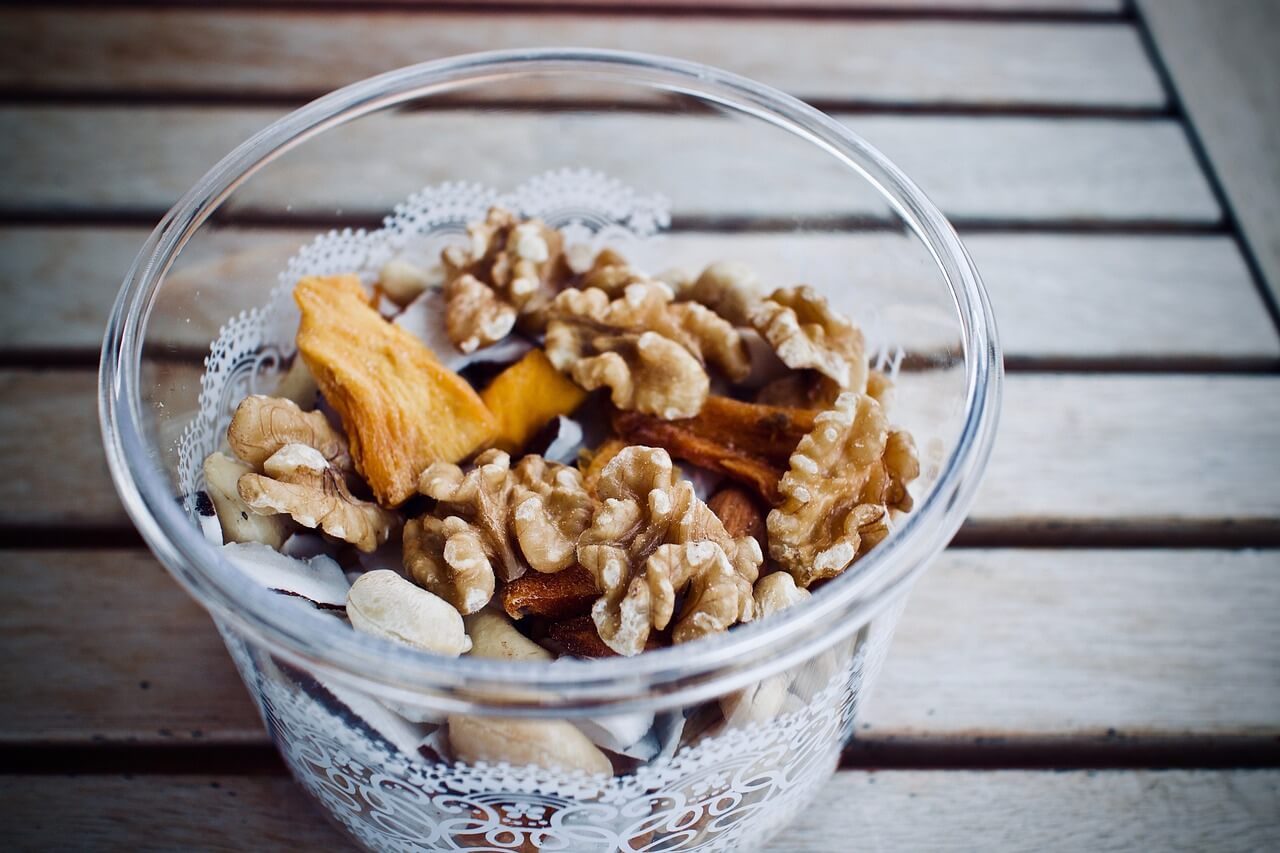Magnesium, the unsung hero of the mineral world, plays a crucial role in over 300 bodily functions, impacting everything from muscle and nerve function to energy production and bone health. Yet, many individuals fall short of their daily magnesium needs, potentially missing out on its amazing benefits.
Magnesium is not merely a mineral; it’s a cornerstone of optimal health and vitality. By harnessing the nutritional power of these ten superfood heroes, you can embark on a journey towards enhanced wellbeing and vitality. So, dive into the world of spinach, quinoa, avocados, almonds, bananas, dark chocolate, pumpkin seeds, edamame, sweet potatoes, and kale, and unlock the transformative potential of magnesium-rich nutrition. Empower your wellbeing and embrace the magnificence of magnesium today!
Fear not, fellow health enthusiasts! Here’s a deep dive into 10 superfoods brimming with magnesium, transforming them from mere ingredients to nutritional powerhouses:
Contents
- 1 Leafy Green Legends
- 2 Dark Chocolate Indulgence (Guilt-Free)
- 3 Avocados: The Creamy Champions
- 4 Bananas: Nature’s Portable Powerhouse
- 5 Nuts & Seeds: Tiny Titans of Nutrition
- 6 Black Beans: The Budget-Friendly Boosters
- 7 Edamame: Nature’s Green Gems
- 8 Quinoa: The Ancient Grain Ally
- 9 Fatty Fish: Omega-3 & magnesium Marvels
- 10 Yogurt: The Probiotic Powerhouse
- 11 Conclusion
- 12 FAQ
Leafy Green Legends
Unleash the power of the leafy green brigade: spinach, kale, collard greens, and their verdant allies. A single cup of cooked spinach boasts a whopping 37% of your daily magnesium needs, alongside vitamins A, C, and K, and the mighty fiber duo. Imagine, a Popeye-worthy boost in every bite!
This text explores the nutritional powerhouses of leafy greens, including spinach, kale, and collard greens. Spinach is the most magnesium-rich green, providing 37% of daily magnesium needs. Kale, the king of leafy greens, is also rich in magnesium and other essential nutrients.
Collard greens, a staple in Southern cuisine, are another magnesium-rich green, providing a significant portion of daily magnesium needs. These greens also offer health benefits, such as promoting eye health and reducing inflammation. Verdant allies, such as Swiss chard, arugula, and mustard greens, offer unique blends of nutrients and flavors. By incorporating these leafy greens into your diet, you can elevate your magnesium intake and experience enhanced health and vitality. By embracing the verdant vitality of these nutritional superheroes, you can lead a magnesium-rich lifestyle that is both delicious and nourishing.

Dark Chocolate Indulgence (Guilt-Free)
Yes, you read that right! Dark chocolate (70-85% cocoa) isn’t just a delightful treat; it’s a magnesium treasure trove. Each ounce offers 64mg of magnesium, along with antioxidant warriors protecting your cells and potentially improving blood flow and heart health. Remember, moderation is key – enjoy responsibly!
Dark chocolate, with a cocoa content of 70-85%, is a hidden gem of magnesium-rich goodness. Each ounce of dark chocolate contains 64mg of magnesium, which supports various bodily functions and contributes to daily magnesium needs. Dark chocolate is rich in fiber, iron, and antioxidants, which act as cellular protectors against oxidative stress and inflammation. This synergy between magnesium and antioxidants in dark chocolate can lead to improved cellular health, reduced risk of chronic diseases, and enhanced longevity.
Dark chocolate also enhances blood flow and heart health, with evidence suggesting potential improvements in blood flow and heart health. It promotes endothelial function, reduces blood pressure and cholesterol levels, and supports cardiovascular wellness. Moderation is key when enjoying dark chocolate, balancing enjoyment with mindful portion control. Discover tips for incorporating dark chocolate into a balanced diet, from mindful snacking to creative culinary endeavors.
In conclusion, dark chocolate transcends mere confectionery delight, offering magnesium-rich goodness and potential cardiovascular benefits. By savoring dark chocolate responsibly, you can indulge in its decadent allure while nourishing your body with essential nutrients and supporting overall wellbeing.

Avocados: The Creamy Champions
Avocados, the creamy darlings of the fruit world, aren’t just delicious; they’re nutritional powerhouses. Half an avocado packs 12% of your daily magnesium, plus healthy fats, fiber, and potassium – a well-rounded team for optimal health. Spread, mash, or guac your way to magnesium bliss!
Avocados are a creamy fruit known for their nutritional power and nutritional benefits. They provide 12% of your daily magnesium needs, along with healthy fats, fiber, and potassium. These green gems are rich in monounsaturated fats, fiber, and various vitamins and minerals, making them a great source of magnesium.
Avocados also offer healthy fats and fiber, which contribute to heart health, satiety, and nutrient absorption. The fiber content of avocados promotes digestive health, blood sugar control, and weight management. Potassium, another vital mineral, is found abundantly within avocados, supporting electrolyte balance, heart health, and blood pressure regulation.
Culinary creativity with avocados is endless, as they can be incorporated into various dishes, such as avocado toast or homemade guacamole. These avocados can enhance both the flavor and nutritional value of your favorite dishes, inviting you to savor magnesium bliss in every bite.
In conclusion, avocados are not just culinary delights but nutritional powerhouses that can be incorporated into your diet to nourish your body with essential nutrients while indulging in creamy decadence.

Bananas: Nature’s Portable Powerhouse
Potassium’s poster child, the banana, also shines with magnesium. This readily available fruit offers 32mg of magnesium per medium banana, along with potassium, vitamin B6, and fiber. Toss one in your bag for a convenient and nutritious on-the-go snack.
Bananas are a popular fruit known for their potassium-rich nutrition, but they also contain magnesium, a vital mineral essential for muscle function, energy production, and bone health. With 32mg of magnesium per medium banana, bananas are a convenient and nutritious snack for busy lifestyles.
Bananas are also rich in potassium, which is crucial for heart health, fluid balance, and muscle function. The synergy between potassium and magnesium in bananas promotes optimal bodily function and overall vitality. Bananas also offer additional nutritional benefits in the form of vitamin B6 and fiber, which support metabolism, immune function, and nervous system health.
Bananas are also perfect on-the-go snacks, making them a convenient and delicious snack option for busy lifestyles. They can be paired with nut butter, yogurt, or oatmeal for a quick and satisfying meal. Bananas embody the perfect balance of potassium and magnesium, offering a delicious and nutritious solution for busy lifestyles. By incorporating bananas into your daily routine, you can enjoy the benefits of their magnesium-rich goodness while enjoying the natural sweetness and convenience they provide.
Nuts & Seeds: Tiny Titans of Nutrition
Don’t underestimate the mighty nut and seed kingdom! Almonds, cashews, peanuts, pumpkin seeds, sunflower seeds – each offers a magnesium bonanza. An ounce of almonds provides 20% of your daily needs, along with healthy fats, fiber, and protein. Sprinkle them on salads, yogurt, or enjoy them solo for a satisfying crunch.
The nut and seed kingdom is a treasure trove of magnesium-rich delights, including almonds, cashews, peanuts, pumpkin seeds, and sunflower seeds. Almonds provide 20% of your daily magnesium needs in just one ounce, along with healthy fats, fiber, and protein. They offer a magnesium bonanza alongside other essential nutrients, such as vitamins and minerals.
Almonds are a magnesium-rich marvel, providing 20% of your daily magnesium needs in just one ounce. They offer healthy fats, fiber, protein, and an array of vitamins and minerals. They support bone health, heart health, and energy production. Beyond almonds, a diverse array of nuts and seeds await, each offering its own unique blend of nutrients and flavors.
Nuts and seeds offer endless possibilities for culinary exploration, whether sprinkled on salads, yogurt, or enjoyed as a standalone snack. They can elevate the flavor and nutritional content of your diet. As you explore lesser-known varieties, such as walnuts, pistachios, and flaxseeds, each offers its own unique nutritional benefits and culinary possibilities.
In conclusion, nuts and seeds are nutrient-rich treasures within the culinary landscape, offering a magnesium bonanza alongside other essential nutrients. By embracing these nuts and seeds, you can nourish your body with the vital nutrients it needs to thrive.
Black Beans: The Budget-Friendly Boosters
Black beans, the affordable protein champions, don’t miss out on the magnesium game. Half a cup packs 60mg of magnesium, plus fiber, protein, and folate. Add them to soups, stews, salads, or enjoy them as a delicious and budget-friendly main course.
Black beans are a versatile and affordable protein source, offering essential nutrients like magnesium, fiber, protein, and folate. With 60mg of magnesium in just half a cup, black beans provide a convenient and affordable source of this vital nutrient. They also offer fiber and protein, supporting digestive health, blood sugar regulation, and satiety. Black beans are a plant-based source of protein for vegetarians and omnivores, and their protein content supports muscle growth, repair, and overall health.
Folate is a vital nutrient for health, essential for cell division, DNA synthesis, and red blood cell formation. It is beneficial for pregnant women, promoting fetal development and reducing the risk of neural tube defects. Black beans are also a delicious and nutritious way to meet folate needs.
Black beans can be used in various culinary creations, adding depth of flavor, texture, and nutrition to any dish. They can be added to soups, stews, salads, or enjoyed as a main course, elevating any meal with their magnesium-rich goodness. In conclusion, black beans are a nutritional powerhouse that offers a magnesium-rich solution for affordable and delicious meals.
Edamame: Nature’s Green Gems
Edamame, the immature soybeans, are nutritional gems overflowing with magnesium. Half a cup offers 50mg of magnesium, along with plant-based protein, fiber, and vitamin K. Steam, boil, or roast them for a versatile and protein-packed snack or side dish.
This text explores the nutritional benefits of edamame, a plant-based protein that is rich in essential nutrients such as magnesium. Edamame, a type of soybean, contains 50mg of magnesium in just half a cup, along with plant-based protein, fiber, and vitamin K. It is a versatile and protein-packed snack or side dish that nourishes the body and delights the taste buds.
Edamame is a magnesium-rich gem, providing 50mg of this vital mineral in just half a cup. It is essential for muscle function, nerve transmission, and bone health. It also offers a combination of plant-based protein and fiber, promoting digestive health, blood sugar regulation, and weight management.
Edamame is also a rich source of vitamin K, essential for bone metabolism and blood clotting. It is essential for maintaining bone density, reducing fracture risk, and promoting cardiovascular health. It regulates calcium deposition in bones and prevents calcification of blood vessels.
Edamame can be used as a versatile and protein-packed snack or side dish, adding flavor, texture, and nutrition to any meal. By incorporating edamame into your diet, you can nourish your body with essential nutrients while enjoying the delicious flavor and texture it brings to your table.

Quinoa: The Ancient Grain Ally
Quinoa, the ancient grain gaining modern fame, isn’t just a complete protein; it’s a magnesium ally. A cup of cooked quinoa provides 36mg of magnesium, alongside fiber, iron, and phosphorus. Make it your breakfast porridge base, toss it in salads, or create fluffy quinoa bowls for a delicious and nutritious meal.
This text explores the nutritional benefits of edamame and quinoa, two essential nutrients that are abundant in the world of nutrition. Edamame, an immature soybean, provides 50mg of magnesium in just half a cup, along with plant-based protein, fiber, and vitamin K. Quinoa, an ancient grain, offers 36mg of magnesium per cup of cooked grains, along with fiber, iron, and phosphorus. These versatile ingredients can be steamed, boiled, or roasted for edamame, or cooked into fluffy quinoa bowls.
Edamame is a nutritional gem, providing 50mg of magnesium in just half a cup, along with plant-based protein, fiber, and vitamin K. It also offers protein-packed fiber, promoting digestive health, blood sugar regulation, and satiety. Vitamin K supports bone health and blood clotting.
Quinoa is celebrated for its complete protein content and magnesium-rich profile, offering 36mg of magnesium per cup of cooked grains. It can be used as a breakfast porridge base, a salad topping, or the star of fluffy quinoa bowls.
Culinary adventures with edamame and quinoa offer endless possibilities for culinary exploration, from simple snacks to hearty meals. By incorporating these versatile ingredients into your meals, you can nourish your body with vital nutrients while enjoying the delicious flavors and textures they bring to your table.
Fatty Fish: Omega-3 & magnesium Marvels
Fatty fish like salmon, mackerel, and tuna aren’t just omega-3 superstars; they’re magnesium marvels too. Three ounces offer 53mg of magnesium, along with the heart-healthy benefits of omega-3s. Grill, bake, or poach them for a satisfying and nutritious culinary experience.
Fatty fish, such as salmon, mackerel, and tuna, are treasures of the sea, offering heart-healthy benefits of omega-3 fatty acids and magnesium marvels. With three ounces providing 53mg of magnesium, these fish offer a tantalizing and nutritious culinary experience. They are rich in magnesium, essential for cardiovascular health, muscle function, and nerve transmission. Fatty fish are also renowned for their omega-3 superpowers, which reduce inflammation, lower triglyceride levels, and support brain health and cognitive function. These omega-3s can reduce the risk of heart disease and improve overall cardiovascular health.
Fatty fish offer endless culinary adventures, from grilling to baking, and poaching in fragrant broths. Experiment with different cooking techniques and seasonings to enhance the natural flavors of fatty fish. Fatty fish are a welcome addition to any diet, providing essential nutrients while indulging in the rich flavors and textures they provide. Canned or smoked fatty fish are also available for quick and easy meal solutions.
In conclusion, fatty fish are culinary gems, offering a delectable blend of omega-3 superpowers and magnesium-rich goodness. By incorporating these fish into your diet, you can nourish your body with essential nutrients while indulging in the rich flavors and textures they provide.

Yogurt: The Probiotic Powerhouse
Yogurt, the fermented dairy delight, isn’t just good for your gut; it’s a magnesium source too. Six ounces offer 42mg of magnesium, along with calcium, protein, and beneficial probiotics. Enjoy it plain with fruit and nuts, or whip up a smoothie for a refreshing and gut-friendly treat.
Yogurt is a versatile and nutritious dairy product that offers a rich source of magnesium, calcium, protein, and probiotics. With six ounces of yogurt providing 42mg of magnesium, it is a nutritious and flavorful addition to any diet. Yogurt is known for its role in gut health, supporting digestion, boosting immune function, and reducing inflammation. It also contains probiotics, live microorganisms that promote a healthy balance of gut bacteria.
Yogurt also contains essential nutrients like calcium and protein, which are crucial for bone health, muscle function, and nerve transmission. The protein content of yogurt supports muscle growth, repair, and overall health. It can be enjoyed plain with fruit and nuts or blended into a smoothie for a refreshing snack or post-workout treat.
Yogurt offers endless culinary possibilities, from breakfast to dessert, and can be paired with fresh fruit and nuts for a nutritious breakfast or blended into a creamy smoothie for a refreshing snack or post-workout treat. Experiment with different flavor combinations and toppings to create custom yogurt bowls, parfaits, and desserts that satisfy your taste buds and nourish your body with essential nutrients.
In conclusion, yogurt is a versatile and nutritious addition to any diet, providing a rich source of magnesium and other essential nutrients.
Conclusion
magnesium is not merely a mineral; it’s a cornerstone of optimal health and vitality. This essential nutrient plays a crucial role in numerous bodily functions, including muscle function, bone health, energy production, and more. By harnessing the nutritional power of ten superfood heroes rich in magnesium, you can embark on a transformative journey towards enhanced wellbeing and vitality.
Dive into the world of spinach, quinoa, avocados, almonds, bananas, dark chocolate, pumpkin seeds, edamame, sweet potatoes, and kale, each offering its own unique blend of nutrients alongside magnesium. Spinach and kale provide leafy green goodness, while quinoa and sweet potatoes offer wholesome grains and root vegetables packed with magnesium. Avocados, almonds, and pumpkin seeds are healthy fats and protein sources enriched with magnesium, while bananas and dark chocolate provide delicious treats brimming with this vital mineral. Edamame rounds out the list with its plant-based protein and magnesium content.
By incorporating these magnesium-rich superfoods into your diet, you can nourish your body with essential nutrients and unlock the transformative potential of magnesium-rich nutrition. Whether enjoying a hearty quinoa salad, a creamy avocado smoothie, or a decadent square of dark chocolate, each bite brings you closer to optimal health and vitality.
Empower your wellbeing today by embracing the magnificence of magnesium and incorporating these superfood heroes into your daily meals and snacks. With every nutrient-packed bite, you’re fueling your body with the building blocks it needs to thrive. So, seize the opportunity to enhance your health and vitality, and embark on a journey towards a brighter, healthier future powered by magnesium-rich nutrition.
FAQ
Here are some frequently asked questions (FAQs) about magnesium-rich superfoods:
- What are some magnesium-rich superfoods?
- Spinach, quinoa, avocados, almonds, bananas, dark chocolate, pumpkin seeds, edamame, sweet potatoes, and kale are all excellent sources of magnesium.
2. Why is magnesium important for health?
- Magnesium plays a crucial role in numerous bodily functions, including muscle function, bone health, energy production, and nerve transmission. It also supports heart health, regulates blood sugar levels, and contributes to overall wellbeing.
3. How can I incorporate magnesium-rich superfoods into my diet?
- You can enjoy magnesium-rich superfoods in various ways, such as adding spinach and kale to salads or smoothies, cooking quinoa as a side dish or base for bowls, snacking on almonds or pumpkin seeds, incorporating avocados into sandwiches or salads, and indulging in dark chocolate as a treat.
4. Are there any side effects of consuming too much magnesium?
- While magnesium is generally safe when consumed in appropriate amounts from food sources, excessive intake from supplements may cause diarrhea, nausea, and abdominal cramping in some individuals. It’s essential to consult with a healthcare professional before starting any new supplement regimen.
5. Can magnesium-rich superfoods help with specific health conditions?
- Magnesium-rich foods may offer benefits for various health conditions, including muscle cramps, migraine headaches, high blood pressure, and diabetes. However, it’s essential to maintain a balanced diet and consult with a healthcare professional for personalized advice.
6. Are there any dietary restrictions or considerations when consuming magnesium-rich superfoods?
- Some individuals may need to monitor their intake of certain magnesium-rich foods due to dietary restrictions or health conditions. For example, those with nut allergies should avoid almonds, and individuals with kidney disease may need to limit high-potassium foods like bananas. It’s crucial to tailor your diet to meet your individual nutritional needs.
7. Can children consume magnesium-rich superfoods?
- Yes, children can enjoy magnesium-rich superfoods as part of a balanced diet. However, it’s essential to ensure age-appropriate portion sizes and supervise their intake, especially for potential choking hazards like nuts and seeds.
8. Are there any cooking tips or recipes for incorporating magnesium-rich superfoods?
- You can find a variety of delicious recipes online that feature magnesium-rich superfoods, from salads and smoothies to main dishes and desserts. Experiment with different cooking methods and flavor combinations to create nutritious and flavorful meals that incorporate these nutrient-packed ingredients.

